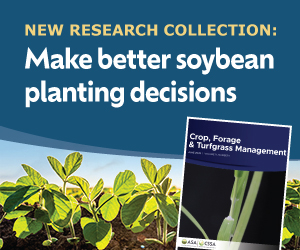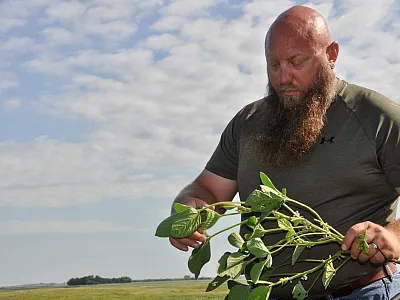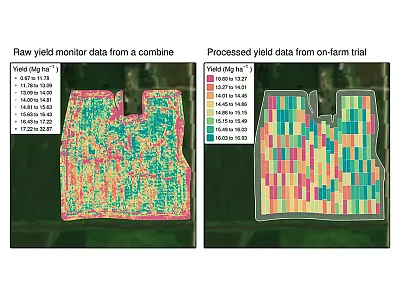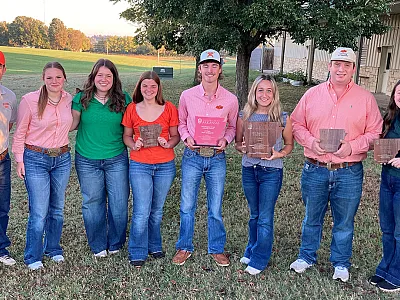Economics of Cover Crops
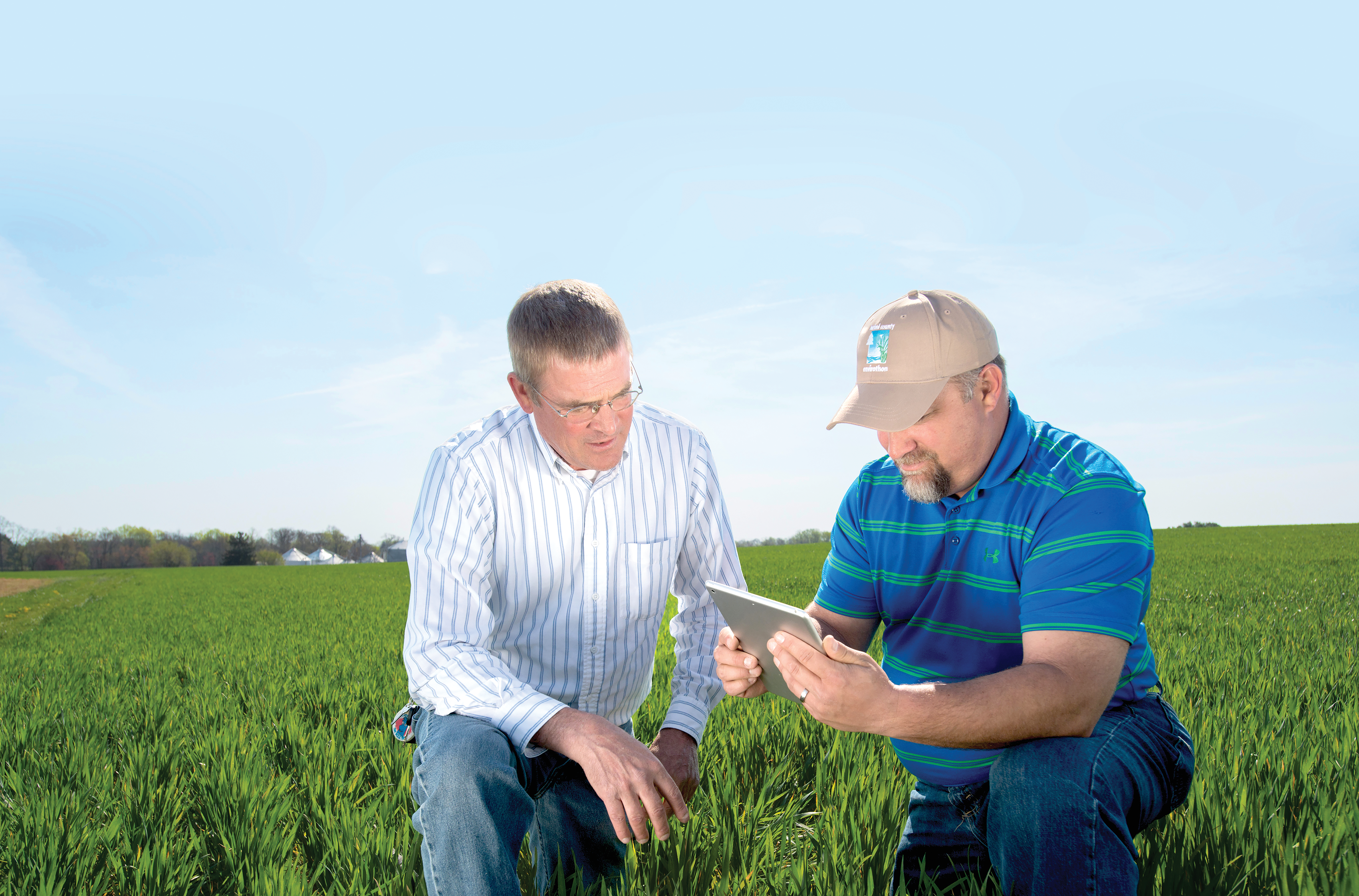

While a comprehensive economic analysis of cover crops accounting for all soil ecosystem services from cover crops is lacking, the available studies indicate that cover crops have potential to provide positive net returns if biomass production is sufficient. Among the opportunities to generate positive economic outcomes from cover crops include grazing and harvesting cover crops, savings on herbicides and fertilizers, carbon credits, and monetization of soil ecosystem services. Earn 1.5 CEUs in Crop Management by reading this article and taking the quiz.
Do cover crops increase farm profits? This may be one of the questions that many have before introducing cover crops into a cropping system. Indeed, producers can be reluctant to adopt cover crops if no immediate economic benefit is to be obtained. Thus, economic costs associated with cover crop adoption need discussion. Cover crop adoption has direct and indirect costs and benefits (Bergtold et al., 2017). Some direct costs include seed purchase and planting and termination operations while indirect costs include reduced water for the next crop in water‐limited regions, slow soil warming due to increased cover crop residue cover, and a potential decrease in subsequent crop yields.
Furthermore, addition of cover crops complicates the management of the whole farm system. Cover crop establishment costs can range from $20 to $80 per acre, depending on seed cost, seeding rates, cover crop species, and planting and termination method (Pratt et al., 2014; Roth et al., 2018). Direct or indirect economic benefits from cover crop adoption are still unclear. The main direct economic benefit would be a potential increase in subsequent crop yields while indirect benefits can include savings on fertilizer, herbicides, and other production costs (Cates et al., 2018).

Literature is replete with information on the overall positive impacts of cover crops on soil physical, chemical, and biological properties; erosion control; reduced nutrient losses; and other ecosystem services related to soils. The follow‐up question is: Do these soil benefits result in increased farm income after cover crop introduction relative to not planting cover crops? Planting cover crops in the name of soil conservation and management is a worthy goal, and this is enough reason to further promote cover crop adoption. However, if cover crops do not generate economic returns, then large‐scale cover crop adoption may be limited. A direct economic benefit from cover crops can be the most appealing incentive to adopt cover crops.
Interest in cover crops is growing, but their adoption is still slow in spite of the well‐known soil benefits of cover crops. In the U.S., the adoption of cover crops does not exceed 5% in most locations (Dunn et al., 2016). Economics of cover crops under different scenarios of cover crop management need further evaluation and discussion for decision‐making purposes. In general, it is expected that fields without cover crops will be more profitable than fields with cover crops if costs of cover crop establishment and management are not offset. This article highlights some of the opportunities that can generate economic returns from cover crop management.
Economic Analysis
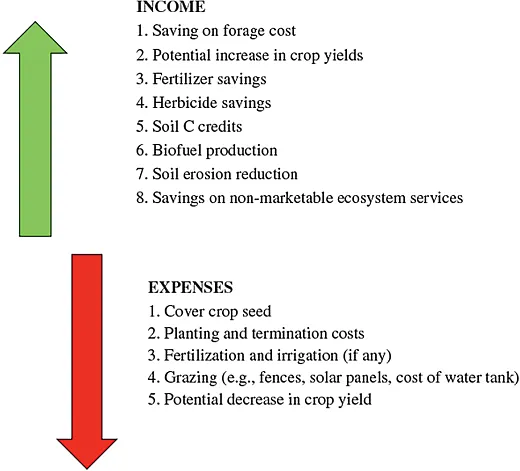
Published literature has focused more on the implications of cover crop adoption on soil conservation, soil C sequestration, weed suppression, soil fertility, crop yields, and other soil ecosystem services and less on the economics of cover crops. For instance, our understanding of direct and indirect cover crop production costs as well as direct and indirect economic benefits accounting for monetary and non‐monetary soil ecosystem services provided by cover crops through a comprehensive economic analysis is still limited. Some studies have conducted a partial budget economic analysis based on cover crop cost (seed, planting, and termination) and crop yield response (Figure 1). In the U.S. Corn Belt, Pratt et al. (2014) estimated that cover crop costs ranged from $33.1 to $69.80 per acre while economic benefits ranged from $37 to $78 per acre. Economic benefits can include nutrient scavenging, increased soil organic matter concentration, weed suppression, and reduced nitrate leaching, soil erosion, and soil compaction. Another study in the U.S. Midwest found that a cereal rye and daikon radish cover crop mix can recover approximately 61% of cover crop implementation costs by improving N cycling and reducing soil erosion and N losses to subsurface drainage under corn and soybean systems (Roth et al., 2018). In water‐limited regions, Bergtold et al. (2017) estimated that if cover crops replace fallow in crop–fallow systems, positive net returns can be expected.
The few available estimates above suggest cover crops can be profitable, but such profitability varies based on a number of factors including cover crop management, cover crop species, main crop management, and climatic conditions. As an example, the seeding rate for aerial cover crop seeding can be twice of drilled cover crops although aerial seeding does not often outperform drilled cover crops (Blanco‐Canqui et al., 2017). Some of the potential opportunities that could generate economic income from planting cover crops include grazing and harvesting cover crops, weed suppression, C and N credits, valuation of soil ecosystem services, and others as discussed next.
Grazing and Harvesting
Grazing and harvesting cover crops are emerging opportunities to attain annual positive net return from cover crops. Grazing or harvesting cover crops does not eliminate all the benefits of cover crops for maintaining or improving the services that soils provide. Cover crop root biomass in addition to the remaining portion of the aboveground biomass coupled with manure input can maintain soil benefits from cover crops when cover crops are grazed (Franzluebbers & Stuedemann, 2007). For instance, in dairy farms, harvested cover crops can be used as a nutritious supplement forage source (Blanco‐Canqui et al., 2021). The potential increase in farm economics with grazing and harvesting may offset a decrease in crop yield although excessive soil compaction due to high animal stocking rates during wet periods could increase production costs through the use of tillage operations to alleviate soil compaction
Studies using a partial budget analysis showed grazing and harvesting cover crops can, in general, increase farm income (Table 1). These studies considered positive effects (e.g., reduced forage cost) and negative effects (cover crop seed, cover crop planting and termination costs, and fencing) to evaluate cover crop economics. Net farm income from grazing cover crops can increase after the first year due to greater initial investment cost in the first year. For example, in South Dakota, annual net return was $17.2 per acre in the first year and $43.6 per acre in the second year after deduction of one‐time purchase costs (e.g., fences, solar panel, and water tank) from the first year. Table 1 also indicates net returns vary from study to study, which suggests that total net economic return depends on cover crop management.
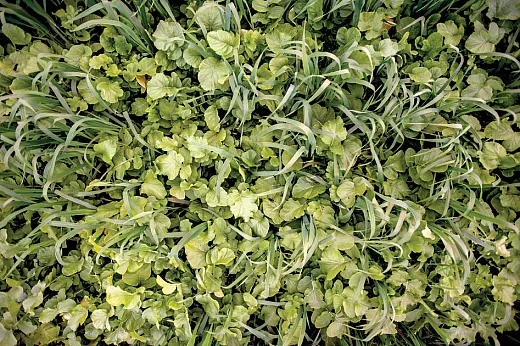
It is important to note that the available economic analyses are from short‐term studies (less than five years). Multiple years of cover crop management are needed to establish firm economic estimations from cover crop grazing or harvesting.
Amount of biomass, cover crop species, and climate are some of the factors that can affect economic return from grazing and harvesting cover crops. In water‐limited regions, grass cover crops can be more profitable than legume cover crops because grasses cost less (e.g., seed) and produce more biomass than legumes. In a semiarid region, Holman et al. (2018) reported winter and spring triticale cover crops generated positive economic returns and offset the cost of growing cover crops relative to Austrian pea, lentil, and hairy vetch when cover crops were grown during fallow in winter wheat–fallow systems. They also reported that cover crop biomass production was 0.93 ton/ac for spring triticale, 1.83 ton/ac for winter triticale, and 0.31 ton/ac on average, for legumes. The increased cover crop biomass production can thus translate into increased economic benefits when cover crops are harvested as forage.
Interest is increasing in growing cover crop mixes as livestock feed, but research indicates income from cover crop mixes may not be greater than from growing monocultures. Cost of cover crop seeds for mixtures is higher, but biomass production is lower or similar to monocultures (Florence & McGuire, 2020). Increasing seeding rate for mixtures could increase their biomass production, but it will increase production costs relative to single species. Also, tillage systems may not influence how grazing and harvesting cover crops affect farm income. Franzluebbers and Stuedemann (2007) reported positive economic return from grazing cover crops can be higher than from non‐grazed cover crops regardless of tillage systems.
Precipitation determines the amount of biomass available for removal and thus economic return. If cover crop biomass production is low, then farm profits from fields with cover crops can be minimal or negative. Using cover crops with flexible crop rotations in response to fluctuating precipitation input can be a strategy to generate farm profits in water‐limited years. Holman et al. (2018) recommended that growing cover crops as forage in wet years and using fallow in dry years can be more profitable than planting cover crops every year.
Available information suggests generating income from cover crops by grazing or harvesting can be an option to overcome the potential decline in crop yields and increase total positive net returns from the farm. The economic benefits of grazing cover crops can be immediate if cover crops produce sufficient biomass. However, any potential economic benefits from C sequestration and improvement in soil properties can manifest in the long term (greater than five years) as it can take time for cover crops to accumulate C and exert changes in soil properties. Available studies show grazing cover crops can at least offset the establishment costs (Bergtold et al., 2017; Holman et al., 2018). Overall, using cover crops as livestock feed or as feedstock for biofuel production is a potential option to generate farm profits and could be an economic incentive for the adoption of cover crops.
Weed Suppression
Herbicide cost is an important component of the overall crop production costs, particularly under no‐till management. Use of selective or new herbicides to treat herbicide‐resistant weeds has further increased production costs in recent years. In the U.S., the cost of weed control with herbicides is above $11 billion (Kumar et al., 2020). Introduction of cover crops can be part of integrated weed management strategies to manage weeds including herbicide‐resistant weeds and thus to reduce costs of herbicide purchase and application (Kumar et al., 2020; Osipitan et al., 2018). Cover crops can reduce weed biomass by 90–100% (Blanco‐Canqui et al., 2022).
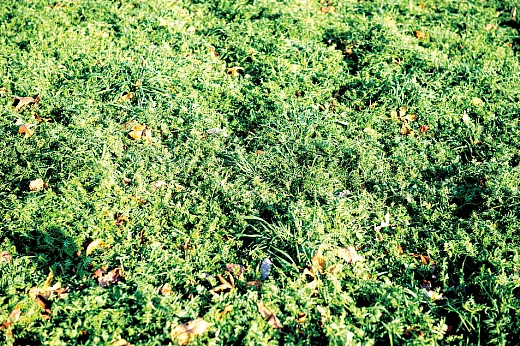
Grass cover crops such as winter rye and triticale due to lower seed cost and greater biomass production can be more cost‐effective for controlling weeds than legume cover crops. Petrosino et al. (2015) reported that one less herbicide application was required to control kochia (herbicide‐resistant weed) in winter wheat–fallow systems when cover crops replaced fallow than in those without cover crops. Because herbicides can also be needed to terminate cover crops and thus increase cover crop production costs, termination of cover crops via mowing or harvesting could be an alternative to reduce herbicide application costs provided that cover crops do not regrow. This termination method could deliver a dual service: Reduced herbicide application cost and harvested biomass for livestock or biofuel production.
Nitrogen Credit
Legume cover crops can reduce production costs by reducing the amount of inorganic fertilizer needed for the following crop (Ketterings et al., 2015). For example, a review by Fageria et al. (2005) concluded legume cover crops can fix between 21 and 250 lb/ac of N. The benefits of legume cover crops for reducing mineral fertilizer use depends mainly on genetic characteristics and biomass production. Legume cover crops can rapidly release N for the subsequent crop under optimum management and weather conditions for residue decomposition although the recovery of legume‐derived N can be lower (<30%) than that from inorganic fertilizer (30–50%; Sievers & Cook, 2018). The monetary value of the amount of N released from cover crops can be equivalent to that of inorganic N fertilizer. The N fertilizer equivalence of legume cover crops for the following crops can range between 11 and 162 lb/ac of available N with an average of 80 lb/ac of N (Fageria et al., 2005).
The benefits of legume cover crops for increasing crop yields and farm profits depend on the amount of synthetic fertilizer applied. Cover crops can increase crop yields primarily when inorganic fertilization is zero or below recommended fertilization rates. Systems with high price premiums such as organic farming can particularly benefit from cover crops as the primary N source. A case study in a cool temperate region found that corn yields between plots with synthetic fertilization and those with cover crops (crimson clover, hairy vetch, and red clover) did not differ during the three‐year transition period to organic farming under corn–soybean–winter wheat rotation (Yang et al., 2019).
Cover crops could reduce the need to purchase synthetic fertilizers, particularly when the recommended N fertilizer rate is low. However, N credits from legume cover crops are not often accounted in systems receiving high amounts of synthetic fertilizers. Proper accounting for the exact amount of N credits from cover crops is required to reduce the total N requirements. In a tropical region, combining synthetic N fertilizer with hairy vetch cover crops by proper adjustment of credits for N from the legume cover crop was a strategy to reduce costs of inorganic fertilization while increasing crop yields (Pes et al., 2022). Thus, combining N from legumes and N from mineral fertilizers could be more profitable than without such combination.
Non‐legume cover crops can also accumulate N and reduce production costs by scavenging and reducing losses of N from croplands. For instance, cereal rye can accumulate approximately 89 lb/ac of N, depending on the amount of biomass produced (Fageria et al., 2005). Grass cover crops hold residual N and can slowly release it during the main crop‐growing season via decomposition. Both legume and non‐legume cover crops affect N management in the soil. Legume cover crops decompose more rapidly than non‐legumes after termination, and can thus reduce the amount of N fertilizer needed by the following crop, thereby readily reducing production costs.
Soil Carbon Credit

Cover crops can also contribute to farm economics by sequestering C in the soil. On a global scale, cover crops can sequester between 0.09 and 0.25 tons per acre per year, depending on the information source. This amount of C sequestered can be tradable in the developing agricultural C credit market. Increasing the amount of land area under cover crops as well as cover crop biomass production per unit of land can be strategies to further enhance the amount of C sequestered by cover crops and thus increase economic returns. However, it is important to determine the soil C stability under cover crops. While cover crops can increase soil C stocks to qualify for C credits, such increase could rapidly disappear if cover crops are not planted each year after harvest, particularly in degraded or water‐limited regions (Blanco‐Canqui et al., 2013). Estimating economic returns from C sequestration with cover crops for a given farm based on global averages of C sequestration without accounting the site‐specificity of C sequestration can be, however, questionable.
Furthermore, an accurate quantification of cover crop impacts on soil C sequestration in deeper soil depths can be essential for the development of C credits and economic calculations. Most data showing the potential of cover crops to accumulate C are from shallow soil layers (<20 cm depth; Blanco‐Canqui, 2022). How cover crops affect deep C storage in the soil profile is still unclear (Tautges et al., 2019). In sum, cover crops, as a potential sink of C, could be used as a valuable C offset tool in current agricultural systems in the emerging C‐trading programs to generate net returns (Settre et al., 2019).
Crop Residue Harvesting
Another indirect opportunity to increase farm profits from cover crops can be by harvesting residues from the main crops for expanded uses such as livestock or biofuel production and then planting cover crops to offset any negative crop residual removal‐induced effects on soil erosion, organic matter loss, and other soil services. In the U.S., corn stover is valued at approximately $60 per ton (Edwards, 2020). Corn stover is harvested and baled from approximately 10% of the total area under corn from corn‐producing states in the U.S., but the amount of harvested corn stover varies with location (Edwards, 2020). Corn stover harvested can increase as demands for livestock feed and other uses (e.g., biofuel production) increase.
Addition of cover crops could allow greater amounts of corn stover removal for livestock or biofuel production than from corn fields without cover crops. In the U.S. Corn Belt, Pratt et al. (2014) estimated that adding cover crops to corn fields can increase corn stover removal by 1.78 tons/ac relative to fields without cover crops and that combination (corn stover removal followed by cover crops) can be more profitable than cover crops alone, depending on the price of stover. Cover crops can provide much‐needed cover to maintain soil ecosystem services after crop residue removal while improving farm economics. Cover crops are particularly needed in spring when soils often remain bare before crop planting. While current balers only remove approximately 60% of corn stover in fall after corn harvest, percent surface residue cover the following spring in corn stover‐harvested soils can be practically zero due to stover decomposition and losses of stover to wind erosion during winter, which warrants the use of cover crops as a companion practice.
Valuation of Other Ecosystem Services
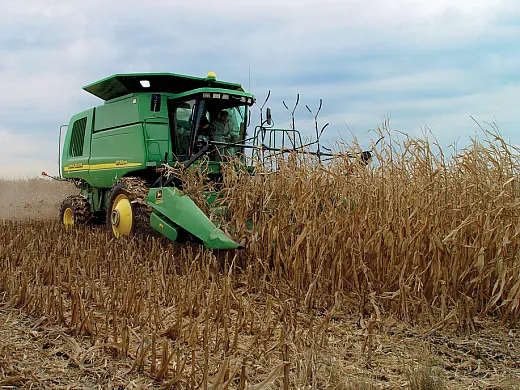
Cover crops provide many soil ecosystem services that are not often assigned a specific monetary value (Figure 1). Such services include reduced soil erosion or sedimentation and improved water quality, biodiversity, and wildlife habitat (e.g., birds, pollinators), among many others. Economic valuation of these benefits needs consideration to enhance farm profitability after cover crop adoption. Placing a monetary value on all soil and environmental services is difficult but can incentivize farmers for greater adoption of cover crops at global scales.
One general question can be: What is the economic value to the whole society for avoided land degradation and improved water and air quality with cover crops? For example, water and wind erosion has on‐site and off‐site economic costs. On‐site economic costs include loss of water, soil, nutrients, and soil C, and a potential reduction in crop yields. Off‐site costs include water pollution, sedimentation, and deterioration of air quality, which affect the whole society. A remote‐sensing approach in the U.S. Corn Belt found that 35% ± 11% of croplands in the region have lost their A horizon, reducing crop yields by 6% ± 2% and causing an economic loss of $2.8 ± $0.9 billion (Thaler et al., 2021). A related example is the loss of costly N from croplands. Estimates across 10 U.S. Midwestern states reported that N loss equals 2.4 × 109 lb N per year, representing an economic loss of $485 million of N fertilizer value (Basso et al., 2019).
Adding cover crops to soils prone to erosion and nutrient leaching can be an effective practice to reduce economic losses. Research data indicate that cover crops can reduce runoff volume by 10–98% and sediment loss by 22–100% (Blanco‐Canqui, 2018). Runoff is not clean water, but it carries soil, organic matter, and essential nutrients. Thus, growing crops in eroded soils can require purchase of greater amounts of fertilizers than in non‐eroded soils to compensate for the loss of nutrient‐enriched topsoil. Thus, soil erosion does not only have agronomic and environmental costs, but also economic and social costs. If all soil ecosystem services from cover crops are assigned a monetary value, then cover crops can generate economics benefits (Schütte et al., 2020).
Site‐Specificity of Economic Benefits
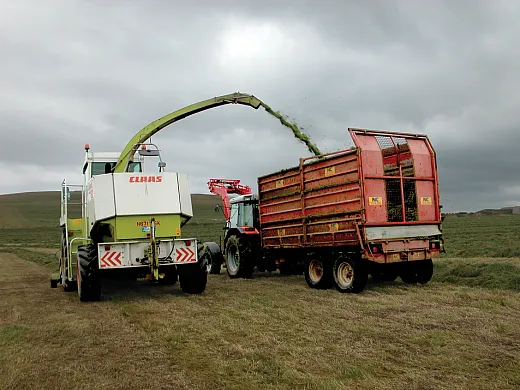
It is important to discuss that while potential for generating economic benefits from cover crops exists, cover crops may not always improve farm profits (Plastina et al., 2020). This is true especially when cover crop biomass production is low. High amounts of biomass production are needed for erosion control, weed suppression, grazing or harvest, C sequestration, N provision (e.g., legumes), and other services that can improve farm income. The average economic gains with grazing, harvesting, weed suppression, and others discussed above may not be realized in all conditions. It is important to stress that cover crops are a long‐term investment. Economic benefits, especially those from soil‐related services (e.g., increased C sequestration), may not surface in the short term (less than five years). Forage production (grazing and harvesting) and weed suppression could offset the costs in the first few years, but potential net return can occur in the medium and long term.
The need to assess the economic benefits of cover crops on a field or local basis cannot be overemphasized for an accurate economic assessment. In some cases, cost‐share or subsidies from state or federal agencies may be necessary to offset costs of cover crop establishment and management and obtain societal benefits from cover crops. Cates et al. (2018) discussed that the probability of negative returns from using cover crops can be between 0% and 77%, depending on cover crop species, mix type, and cover crop biomass production. Also, cost‐sharing conditions may not always allow cover crop grazing or harvesting, which need to be considered during cover crop management decision‐making processes although emerging research data show that cover crop grazing or harvesting may not undo all the intended benefits from cover crops.
Summary
While a comprehensive economic analysis of cover crops accounting for all soil ecosystem services from cover crops is lacking, the available studies indicate that cover crops have potential to provide positive net returns if biomass production is sufficient. Among the opportunities to generate positive economic outcomes from cover crops include grazing and harvesting cover crops, savings on herbicides and fertilizers, C credits, and monetization of soil ecosystem services. Grazing and harvesting of cover crops can provide immediate positive net returns when biomass production is sufficient under proper grazing (e.g., stocking rates) and harvesting (e.g., cutting height) protocols.
Cover crops can also contribute to farm economics by reducing the amount of fertilizers (e.g., legumes) and herbicides (e.g., weed suppression) and sequestering C (e.g., C credits). Reduced soil erosion, improved water quality, and increased organic matter, and other services from cover crops have not been monetized. Yet, assigning a monetary value to these essential services and social costs can generate further positive net returns and incentivize cover crop adoption. Because cover crop biomass production will affect net returns, maximizing biomass production is imperative.
It is important to discuss that cover crops may not always generate positive net returns in all cases, which warrants consideration of cover crop economics on a local basis. In some cases, cost‐sharing can be needed to counterbalance the establishment costs to protect soil and water resources of common societal value. Overall, cover crops can generate income, which may offset the establishment costs and potentially increase net returns while still meeting the original intended soil and environmental goals.
This article is a slightly modified version of a chapter appearing in the new book Cover Crops and Ecosystem Services. English units are used in this version, and literature citations have been omitted due to space constraints but can be viewed in the original book chapter. The complete book is available for purchase by visiting https://bit.ly/cover‐crops‐ecosystem‐services.
Self-Study CEU Quiz
Earn 1.5 CEUs in Crop Management by taking the quiz. For your convenience, the quiz is printed below. The CEU can be purchased individually, or you can access as part of your Online Classroom Subscription.
- Planting cover crops, while environmentally beneficial, will always be a losing proposition economically for farmers.
- True.
- False.
- Some of the direct costs of cover crops include
- Reduced water for the next crop.
- Slow soil warming due to increased cover crop residue cover.
- Both a and b.
- Neither a nor b.
- Despite cover crops’ many proven benefits to soil, they are used on only 15% of cropland.
- True.
- False.
- Numerous factors influence profitability of cover crops. Which of the following is NOT a factor listed in the article?
- Geographic location.
- Crop management.
- Cover crop species.
- Climatic conditions.
- In a North Dakota study cited in the article, farmers who began grazing or harvesting cover crops saw their annual net return increase, despite high start-up costs. But the return increased even more the second year. How much higher were second-year returns over first-year returns?
- 25%.
- 50%.
- 100%.
- 150%.
- Why are grass cover crops often more profitable than legume cover crops in water-limited regions?
- Grass seeds cost less than legume seeds.
- Grass produces more biomass than legumes.
- Both a and b.
- Legumes are more profitable.
- More cover crop biomass harvested as forage can mean more economic benefits. In one study cited in the article, which crop produced the most biomass?
- Winter and spring triticale.
- Lentil.
- Hairy vetch.
- Austrian pea.
- While planting cover crops can cause declines in crop yields, that can be offset by harvesting the cover crops or allowing livestock to graze them.
- True.
- False.
- Farmers spend billions of dollars on herbicides, but cover crops can significantly lower those costs by suppressing weeds. One study cited in the article showed that cover crops can reduce weed biomass by how much?
- 10–20%.
- 30–40%.
- 60–70%.
- 90–100%.
- According to a study cited in this article, how much nitrogen do legumes add to soil on average in terms of nitrogen fertilizer equivalent?
- 11 lb/ac of N.
- 21 lb/ac of N.
- 80 lb/ac of N.
- 162 lb/ac of N.
- Research shows that cover crops affect carbon in shallow soil layers. However, it’s not yet well understood how they affect C storage deeper underground.
- True.
- False.
- Using cover crops in corn fields can allow farmers to remove more corn stover, which has an economic benefit for livestock or biofuel production. One study cited in the article estimated that such a practice could boost corn stover removal by how much per acre?
- 0.44 tons.
- 1.5 tons.
- 1.78 tons.
- 2 tons.
- Erosion has damaged farmers’ bottom lines, causing soil nitrogen losses equal to millions of dollars of fertilizer, and soil losses that have led to billions of dollars of lost revenue due to lower crop yields. Cover crops can mitigate these resource losses and their financial consequences.
- True.
- False.
- Farmers can expect immediate high returns both environmentally and economically when they invest in cover crops.
- True.
- False.
- In the table included in the article, which of the following grazed and/or harvested cover crop treatments showed the highest annual net return per acre?
- A trial in Georgia using cereal rye and pearl millet.
- A trial in Georgia using cereal rye.
- A trial in South Dakota using grass and legume.
- A trial in Alabama using oat and ryegrass.
Text © . The authors. CC BY-NC-ND 4.0. Except where otherwise noted, images are subject to copyright. Any reuse without express permission from the copyright owner is prohibited.



